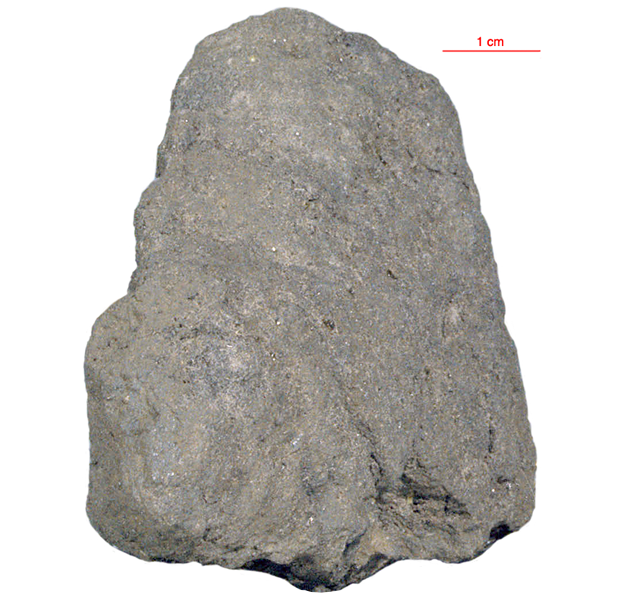
Fact sheet
15597 is a pyroxene vitrophyre consisting mainly of acicular pyroxene phenocrysts, typically with a glass core, set in a matrix of brown glass which shows incipient crystallisation in only a few places. The texture is locally variolitic but sometimes radiate - the latter being the result of rapid cooling (see rotation 1). The pyroxene crystals are composed of a pigeonite centre epitaxially rimmed by augite. Scattered Cr-spinel and metasilic iron globules also occur. Vesicles range in size from a few tens to ~500 microns. 15597 is thought to be an important lunar sample, because it was quenched from high temperature giving important insight to the crystallisation history and cooling rate of lunar basalts.
The sample weighed 147.5 grams before analysis. It has not been dated.
Further details of this and other Apollo samples are here: http://curator.jsc.nasa.gov/lunar/
The Apollo 15 landing site was in the Apennine Highlands, and close to Hadley Rille — a long, narrow winding valley. Approximately 76 kg of lunar material, including soil, rock, core-tube and deep-core samples, were returned to Earth.
This mission was the first flight of the Lunar Roving Vehicle which allowed the astronauts to venture further from the Lunar Module than in previous missions. During three periods of extravehicular activity, or EVA, on July 31st, and August 1st and 2nd, Scott and Irwin completed a record 18 hours, 37 minutes of exploration, travelling 17.5 miles, in the first car that humans had ever driven on the Moon.
Apollo 15 was launched on 26 July 1971.






